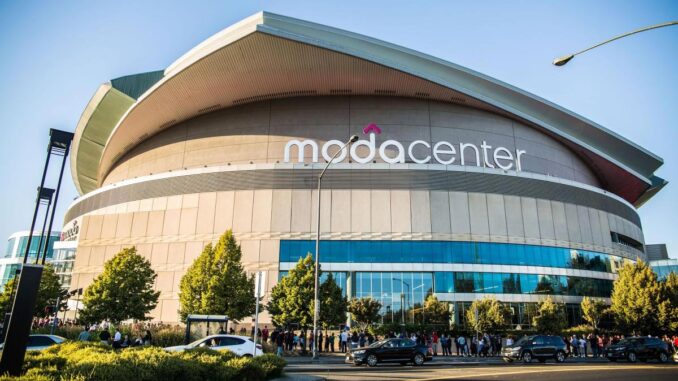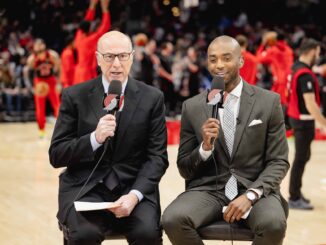
Once the finishing touches on the Golden State Warriors’ trend-setting, billion-dollar plan to go from Oakland to a brand-new arena in San Francisco were polished, the team made the move in 2020, and the Warriors went from playing on basketball’s oldest arena at home to its newest today.
In the process, Golden State also left a shrinking club of NBA franchises with the stadium they call home opening during or before 1995. Iconic landmarks in basketball, such as the New York Knicks’s Madison Square Garden, Boston’s TD Garden, and the Chicago Bulls’s United Center, are the headliners. Other arenas, such as Rocket Mortgage FieldHouse in Cleveland, Footprint Center in Phoenix, Delta Center in Utah, and Target Center in Minnesota, are on there, too.
The Portland Trail Blazers and Portland’s Moda Center round out the list in the Pacific Northwest. The only difference Moda has on other aging arenas? No major renovations or remodels since the grand opening.
Throughout the last decade, the individuals holding the President of Business Operations role for the team, Chris McGowan and now Dwayne Haskins, have publicly set major ambitions in what the 19,393-seater could bring to the city in the entertainment industry following generations of a lack of presence from the national stage, going forward with serious attempts to host national sporting events downtown. Multiple years of more failed bids to host its first-ever All-Star Game later, questions have begun to develop recently regarding the lack of glamor the league office views the Rose City.
Market size and lack of accommodations for players have long been dubbed the answers to those questions. The All-Star Game’s most recent host in Salt Lake City, however, puts doubt to the accuracy of those claims; Portland beats out the Beehive State in both categories, with over 10,000 rooms of accommodation for players and a TV market size that sits 22nd in the nation, while SLC pale with only 7,000 rooms around the stadium and the 29th biggest market size. Both categories for Salt Lake City fall noticeably short of Portland’s numbers.
How about the arenas of both cities and their respective franchises’ efforts in refurbishment up to today’s standards in this era of professional sports? Before the 2022-23 season, the Jazz’s Delta Center’s video boards, upper-bowl “premium” suites, and seating were remodeled and modernized before hosting the All-Star Game for the league. In 2017, Utah underwent a similar $125 million mass renovation, installing new seats for the entire arena in addition to state-of-the-art suites, restaurants, and locker rooms.
Forget All-Star Games and the biggest sporting events on the nation’s calendar, the Moda experience, even for the casual fan attending the customary Sunday-night regular season fixture in December to watch players in Brandon Roy, LaMarcus Aldridge, Damian Lillard, and now Scoot Henderson have shown to not be adequate over time as the arena ages. Many of the key elements in an indoor arena – such as the video board that hangs in the center and the atrium, have developed to be outdated, crowded, and ordinary from what it was in the past over time as those parts continue to run without further improvements. Teams use the district around their stadium to show off the more stylish luxuries the city brings to its residents. However, the area around the Rose Quarter has become quiet outside of game days, with nothing special to do, experience, or embrace. Moda’s lease with the City Of Portland, dangerously due to expire in approximately 24 months, also needs to be addressed soon.
Hankins, in several interactions with the media since his promotion in 2021, understands the growing fan sentiment that an urgent, necessary need for renovation is evident. “That is definitely one of the things that has to happen,” the 41-year-old said earlier this year. At a press conference in October, Hankins laid out his estimates in terms of a timeline, with a preference to host the 2030 Women’s Division I Basketball Final Four at a completely re-done and modernized Moda & Rose Quarter, as well as to once more submit a bid to host an All-Star Game by that date.
If the fans, front office, and the ones in business and ownership taking in the money the Trail Blazers attract every year want to enjoy the revenue and excitement that would come of hosting basketball’s midseason event on the calendar year —- and proudly offer a top-notch regular season and playoff gameday experience for Rip City that’s on-par with the teams and competition the blazers battle on the court, big and expensive improvements have to be done somewhere. It may be time to point to the current state of the team’s now over 25-year-old arena as the root of the league’s problems with Portland, and perhaps not the city itself or its ability to accommodate.



